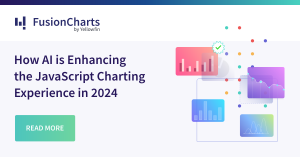This week’s data digest takes a look at how data can transform CRM systems in the future, how it’s changing the way news is consumed today, and finally how visualization helps us comprehend complex patterns in data.
The first post for today, written by ex-salesforce, currently Infer employee, Jamie Grenney, who discusses where CRM platforms are headed. Grenney believes that the problems facing CRM systems today are:
- CRM databases start empty
- CRM isn’t very intelligent
He suggests that right after implementation, CRM systems should monitor website updates, news, public filings, posts to social networks, technology vendors, job openings and new hires. On the point about intelligence, he says CRMs shouldn’t just add hundreds of additional fields to a contact, but rather extract insight using machine learning.
While this is the essential difference between a platform like Infer, which is based on predictive scoring for sales leads, and SalesForce, which has its roots in legacy enterprise architecture, it does touch upon the shift that we’re seeing across all industries. Where businesses are no longer want to be restricted to data in their internal systems, but want to leverage the wider Web itself.
Grenney ends with the reassurance that ‘With the democratization of predictive intelligence, we’ll see huge productivity improvements.’
Tip: Do read our recent post on
predictive analytics for some more detail on this topic
In other news, the New York Times has sparked some buzz with its by adding real-time, cross-platform updates to its personalized news recommendation engine. The update was noticed, and well-documented by NiemanLab.org who note that ‘The Times is well positioned for an investment in personalization… it produces an enormous amount of content — hundreds of stories, blog posts, videos, and slideshows each day. If you’re limiting your recommendations to recent content, you need to be producing a lot of it every day for a personalization filter to make any sense.’ These types of advanced recommendation engines, built by Gravity, and OutBrain, are great examples of how real-time data is being used to add value to businesses in a way that was never possible before. Last week’s data digest highlighted Gartner’s research that Media companies are among the earliest adopters of Big Data, and this is yet another example of that statistic.
The article ends with an interesting tweet by @harrisj who says ‘I also would love if the Recommendation Engine would let me look at what my complete opposite would read.’ The opportunities data presents us with are as much introspective as they are about the larger world.
The last post for today describes the power of visualizations by giving us various examples. The first one is the visualization of live Twitter data of the revolution in Cairo, Egypt.
Another interesting example from the post is of a
wind map based on data from the National Digital Forecast Database. It’s quite fascinating, and I recommend a few minutes of uninterrupted gazing at it.
The most interesting part of the post says ‘we’re more often visualizing data that has many dimensions, like location data overlaid with precipitation or air pollution. Adding to the mix, time series visualizations show progression of different dimensions over time, unlocking enormous insights into how things happened.’
We’re leaving you with the video of the revolution in Cairo as visualized in the form of live tweets. It’s guaranteed to give you goosebumps. Enjoy your weekend!


